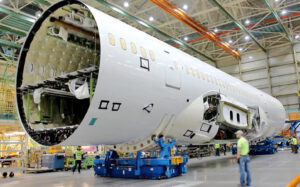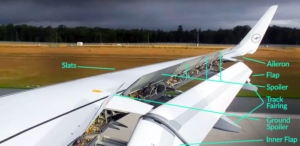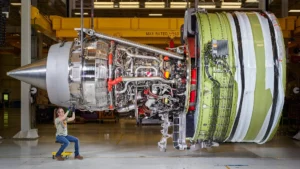What goes into delivering a smooth, safe flight? Behind the scenes, airplane engineering combines advanced technology, rigorous maintenance, and pilot expertise to ensure that each journey is a success. Every component of an airplane, from its wings to its engines, serves a critical role in enabling flight while facing the inherent complexities of modern aviation.
Understanding the intricate parts of an airplane and the engineering challenges pilots manage daily offers a deeper appreciation for the marvel of flight. This exploration reveals how engineering and human skill work in harmony to navigate the skies safely and efficiently.
The Anatomy of an Airplane: Interconnected Systems in Harmony
An airplane is a masterpiece of design, composed of multiple systems working seamlessly together. Each part is optimized for its function, ensuring both efficiency and safety.

Fuselage
The Fuselage: The Backbone of the Aircraft
The fuselage forms the main body of the airplane. It houses passengers, crew, cargo, and vital systems. Acting as the structural core, it connects other key components like the wings, tail, and landing gear.
- Key Features:
The fuselage is pressurized for high-altitude flight, offering comfort and safety to occupants. Its design must withstand both external aerodynamic forces and internal pressurization, requiring materials that are lightweight yet incredibly strong. - Challenges:
Structural fatigue caused by repeated pressurization cycles demands rigorous inspection and maintenance. Engineers rely on advanced materials like composite fibers to enhance durability without adding weight.

The Wings
The Wings: Engines of Lift and Stability
Wings are critical for generating lift, the force that counteracts gravity and keeps the airplane airborne. They house systems like fuel tanks, flaps, and ailerons, which allow pilots to control altitude and roll.
- Engineering Excellence:
Modern wings are designed with flexibility to absorb stress during turbulence while maintaining their aerodynamic shape. The integration of winglets, or upward-facing tips, reduces drag and enhances fuel efficiency. - Challenges Pilots Face:
Pilots must monitor and manage wing systems during varying weather conditions. Ice accumulation on wings can disrupt airflow, reducing lift. Anti-icing systems and pilot training are essential in mitigating these risks.

The Engines
The Engines: Powerhouses of Thrust
Airplane engines provide the thrust needed to propel the aircraft forward, enabling the wings to generate lift. Modern jet engines compress air, mix it with fuel, and ignite the mixture to produce powerful forward motion.
- Technological Marvel:
Jet engines are optimized for efficiency, reliability, and noise reduction. Advances like bypass engines have improved fuel efficiency while reducing emissions. - Challenges and Solutions:
Engine failures caused by bird strikes or mechanical issues pose critical challenges. Pilots undergo rigorous training to handle these scenarios, while engineers incorporate safety features like multiple redundancies to ensure reliability.
The Tail: Ensuring Stability and Control
The tail section, comprising horizontal and vertical stabilizers, maintains the airplane’s balance. It prevents unwanted yaw (side-to-side motion) and pitch (up-and-down motion), ensuring a smooth and steady flight.
- Engineering Focus:
The tail design complements the wings, providing the stability needed for precise maneuvers. Control surfaces like the rudder and elevators allow pilots to fine-tune the airplane’s direction. - Pilot Challenges:
Pilots rely on the tail for maintaining alignment during crosswinds, takeoff, and landing. Malfunctions in the tail’s control systems require immediate corrective action to prevent instability.
The Flight Deck: A High-Tech Control Hub
The flight deck, or cockpit, is the nerve center of an airplane. Packed with advanced technology, it provides pilots with the tools needed to manage all aspects of flight.
Navigation Systems: Keeping the Course
- Instrument Panels:
Advanced displays provide real-time data on altitude, speed, and heading. Modern glass cockpits replace traditional gauges with digital interfaces for greater clarity. - GPS and Autopilot:
Pilots rely on GPS for precise navigation and autopilot systems for managing routine flight paths. These technologies reduce workload and enhance efficiency. - Challenges Pilots Face:
Despite automation, pilots must remain vigilant. Autopilot malfunctions or GPS errors can force pilots to take manual control under high-pressure conditions.
Communication Systems: Connecting the Skies
Effective communication with air traffic control and other aircraft ensures safety and coordination.
- Technology in Action:
Radios and data link systems provide seamless communication, even during adverse weather. Modern cockpits integrate these systems into user-friendly interfaces. - Potential Issues:
Signal interference or equipment failure can disrupt communication, requiring pilots to adapt quickly. Redundant systems and clear protocols mitigate these risks.
Landing Gear: Supporting Takeoffs and Landings
The landing gear supports the airplane during ground operations, takeoff, and landing. Its design must absorb the impact of touchdown and provide stability across diverse surfaces.
Engineering Highlights
Retractable landing gear minimizes drag during flight, while hydraulic systems ensure smooth operation. Advanced materials enhance durability and reduce weight.
Challenges Pilots Face
Landing gear malfunctions, such as failure to deploy, demand precise handling. Pilots execute emergency procedures, including belly landings if necessary. Engineering advancements like backup systems reduce the likelihood of such scenarios.
Electronic Systems: The Brains of Modern Aviation
Electronic systems control navigation, communication, and engine performance. They ensure that pilots receive accurate information to make critical decisions.
Key Features
- Real-Time Data:
Avionics provide up-to-the-minute insights on fuel consumption, weather, and engine health. - Automation:
Systems like electronic flight bags (EFBs) streamline tasks, reducing pilot workload.
Emerging Concerns
As connectivity increases, cybersecurity becomes vital. Engineers prioritize protecting electronic systems from potential cyberattacks, ensuring operational integrity.
Addressing Engineering Challenges: A Team Effort
Maintenance Teams
Ground crews play a crucial role in maintaining airplane systems. Regular inspections identify and address potential issues, ensuring the aircraft remains flight-ready.
Engineers and Manufacturers
Aircraft manufacturers continuously refine designs to improve safety, efficiency, and reliability. Collaborative efforts with pilots provide insights for innovation.
Pilots as Problem-Solvers
Pilots serve as the last line of defense in addressing in-flight challenges. Their ability to troubleshoot, adapt, and execute emergency procedures underscores the importance of skill and training.
Real-World Testimonials: Insights from Aviation Experts
Captain John D., Commercial Pilot
“Modern technology has made flying safer than ever, but it also demands a higher level of vigilance. Pilots must be ready to take control at any moment, especially when systems fail.”
Sarah M., Aerospace Engineer
“Our job is to design aircraft that pilots can trust. Every component is rigorously tested to ensure it performs flawlessly, even under extreme conditions.”
FAQs About Airplane Engineering and Pilot Challenges
Q: How often are airplanes inspected?
A: Aircraft undergo daily checks before flights, with more detailed inspections at regular intervals, such as every 1,000 flight hours.
Q: Can pilots manually fly modern airplanes?
A: Yes, pilots are fully trained to fly manually. While automation assists routine operations, pilots take over during emergencies or system failures.
Q: What happens during an engine failure?
A: Pilots follow established protocols, including shutting down the affected engine and diverting to the nearest airport for a safe landing.
A Collaborative Journey Toward Safer Skies
Airplane engineering represents a triumph of innovation, precision, and human ingenuity. Every component, from wings to electronic systems, plays a role in ensuring safe and efficient flights. Pilots, supported by advanced technology and rigorous training, are at the forefront of navigating challenges and maintaining safety.
The collaboration between engineers, maintenance teams, and pilots continues to drive advancements in aviation, setting new benchmarks for reliability and performance. By addressing engineering challenges with innovation and expertise, the aviation industry paves the way for a future where air travel remains safe, seamless, and awe-inspiring.


